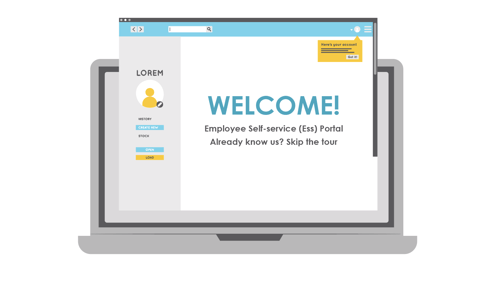As per a Mckinsey report, on average, employees spend over 9.3 hours per week searching for and collecting information. If employees are busy looking for information for hours on end, productivity related to their core job gets severely affected.
Automation that uses tools such as employee self-service (ESS) portals, is a much-needed intervention to enable timely searches for data and is a big part of Digital Transformation. This can help organizations tap into their core competencies and unlock human potential.
Organizations of all sizes across diverse industries are now relying on employee self-service portals to help them streamline and automate a range of internal management processes, thereby significantly increasing Employee Engagement.
Today, retaining the best talent and improving employee experience have become a priority. Employees expect information to be available at their fingertips. Having multiple disparate systems with clunky data leads to a drop in satisfaction and higher attrition. ESS portals enable organizations to decentralize HR functions, including Knowledge and Communication-related processes.
Self-service portals, also called Employee Service Centers, allow employees to have easy access to human resources-related information and processes, such as benefits, taxes, salary slips, etc, which might typically require an employee to spend time away from their desk to clarify simple issues.
Employee Service Centers are also turning out to be enterprise-wide Unified Service Portals or a one-stop-shop that encompasses and consolidates information for employees across various functional departments like HR, IT, and other business processes.
The Employee Service Center is accessible only by employees of the organization. Current forms of the Employee Self Service portal have diverse applications, including:
- Simplifying management of HR Services, such as payroll, tax slips,etc.
Employee Service Center portals function by giving employees their login credentials to access and edit their personal information, making it secure and easy to refer to such information on demand. -
Streamlining internal communications
Simple tools such as company announcements, employee campaigns (targeted content delivery automation) for persona-based content, employee forums, calendars, sign-up events, and discussion boards need to be compiled in one place while being easy to create and maintain. -
Easier knowledge management
Employee Service Center portals are ideally a repository of all the reports and data the organization may have gathered for easier knowledge sharing. Consolidate searches across multiple knowledge bases and HR Services using meta tags for an excellent Employee Experience. -
Collaboration
An effective ESS platform should enable users to connect their queries with topic experts, specialists, or people with experience in a specific project or domain. -
Process automation
Automation includes but not limited to expense management, supply management, etc. -
Easily customizable design and branding
Internal Communications and branding teams can ensure that the branding resonates with company culture and standards.
Given such an extensive range of functionalities, having the best suited portal solution becomes crucial to the internal processes. Selecting a partner for implementing your employee self-service solution is a decision that will impact your employees and indirectly your organization’s overall productivity for the next several years. It’s a process that requires a consideration of the company’s specific needs to deploy the best available solution.
Key considerations when designing or customizing your ServiceNow HR portal using the Employee Service Center
(with examples)
-
Functionality,
which mainly refers to the range of functions in the employee portal. This functionality is derived from widgets, which include but may not be limited to Knowledge Articles, HR Services, Announcements or Communication material, Employee Campaigns, Employee Forums, Virtual Agents with Natural Language Understanding (NLU), profiles of Employees, Project Reports and Status, Company Events, or Photos. Additional key internal processes may include Learning Management, Knowledge Management, Performance Management, Time and Expense Management, among others, as shown below in the ServiceNow HR Portal implemented by INRY: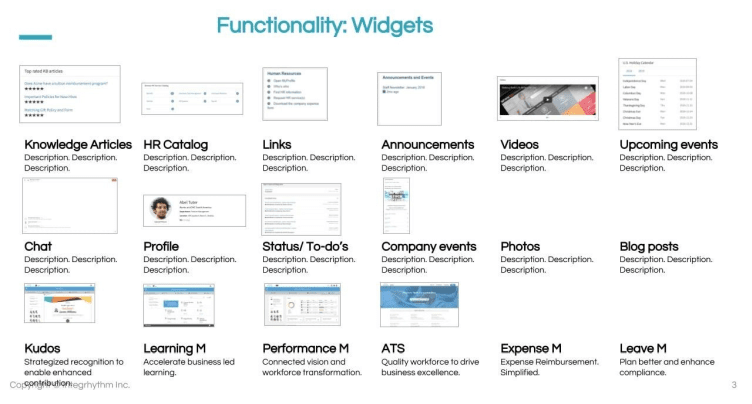
-
Usability
is what the organization would like to derive or achieve by implementing the portal. For example, an action-based approach would be the most suitable for a workforce with a high volume of remote employees. -
User Interface
primarily refers to the overall appearance and functionality, with regards to the colors used, logo sizes and placement, and the overall look and feel of the portal.
Ensuring that these factors are well thought out and implemented makes for a comprehensive and effective solution.
INRY is an Elite level ServiceNow partner. Our HR solution based on the ServiceNow platform offers at least six different user interfaces based on the kind of usability the clients want to derive from their platform and how they wish to engage with their employees.
6 ServiceNow HR service portal user interface examples
-
Action-Based:
Where employees can take action based on the options presented. This option requires a readily available catalog of information and options. For example, accessing top viewed content, acknowledging information, performing tasks, and approvals tracking.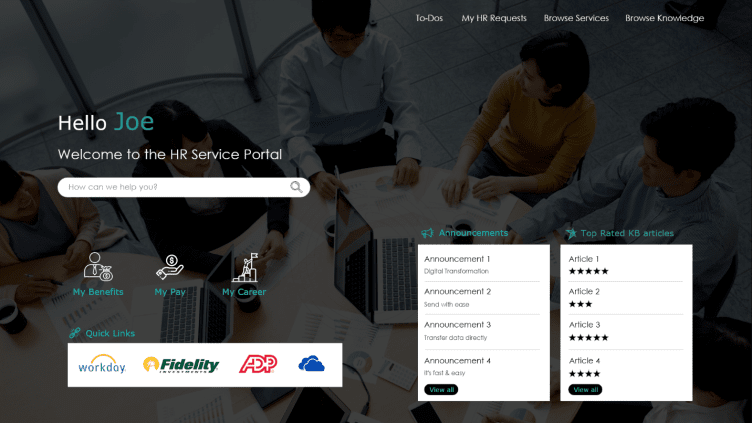
-
Search Based:
In this approach, employees look up information through the search function. Knowledge Article accuracy and persona-based relevancy become extremely critical.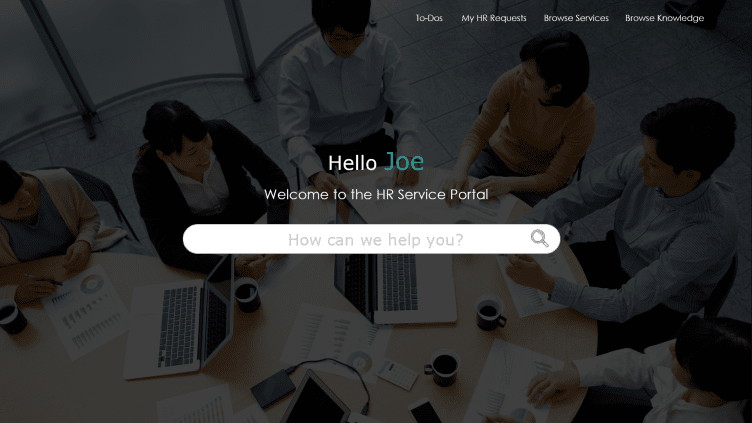
-
Employee engagement oriented:
This approach helps deploy corporate communications easily by engaging the employees through Employee Campaigns, Forums, Company Announcements, etc. However, with this approach, the content needs to be updated regularly.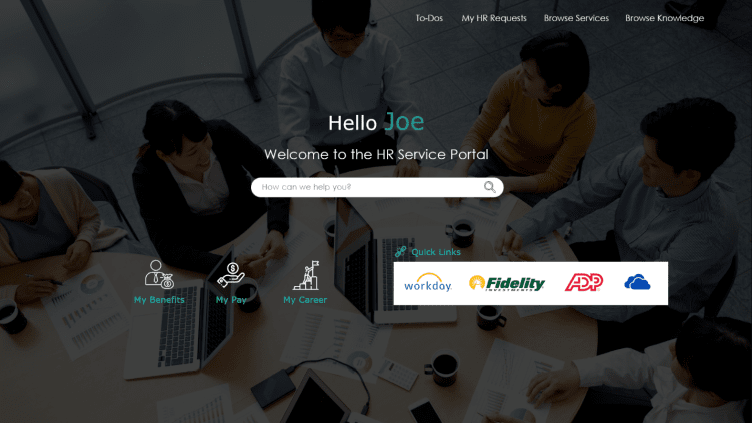
-
Action + Engagement:
This is best suited when you want to deploy internal communications and offer an action-based interface.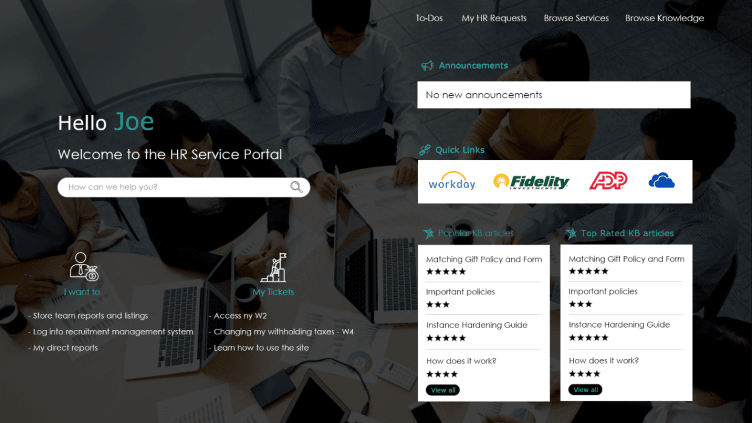
-
Engagement + Search:
This is the best option for companies that want to achieve employee engagement and provide employees with the search function.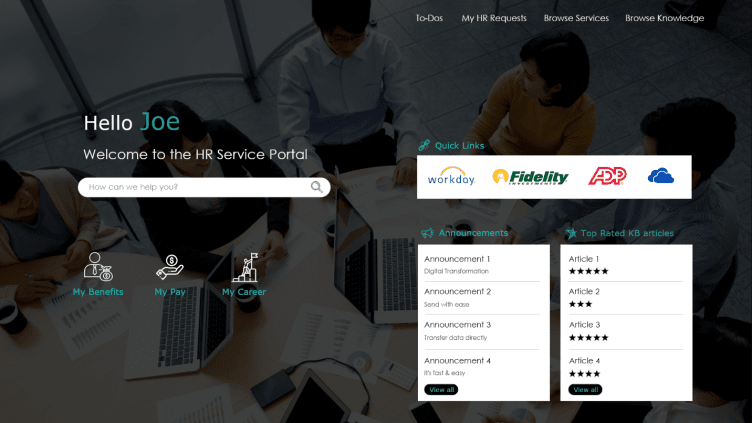
-
App style:
An app-style interface offers its users easy access to all content. Note - a developer may be needed when making changes.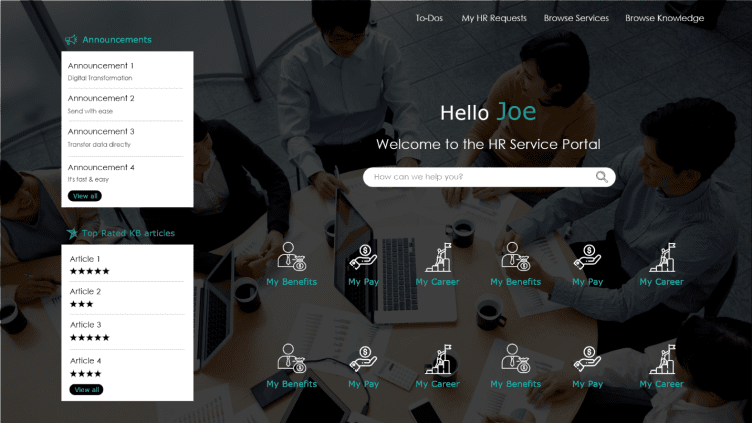
A fortune 500 retailer successfully insources its HR service delivery
INRY implemented the ServiceNow HR Service Delivery solution for a Fortune 500 Retailer and helped the organization regain control and streamline HR operations.
The key challenge, in this case, was the outsourced and outdated HR technology employed by the organization, which presented many issues for their large group of tech-savvy employees. INRY’s approach to implementing a better-suited solution was to conduct several collaborative workshops with the HR team to understand their processes such as employee relations, payroll, leave of absence, restructure, benefits, compensation, and tuition reimbursement.
Using a tailored implementation of the ServiceNow HR Service Delivery, INRY created an effective self-service HR portal that helped the client achieve higher productivity.
Benefits of the new system included:
- Providing employees with a single starting point to look up information along with self-service for support functions and request submissions.
- Providing leadership with real-time insights which can be used to measure, analyze and, continuously improve HR efficiency.
- A smooth, efficient, and engaging experience for employees throughout the implementation process using INRY’s PASS methodology. Having a comprehensive solution for all HR-related information and service requests has significantly reduced the case volumes as the information is readily available within the platform, and all employees have login access to the same information.
- INRY’s approach to building self-service employee centers with ServiceNow
Through INRY’s Self Service Employee Center solutions, organizations have the option to custom brand their HR service centers with user-friendly and intuitive interfaces by leveraging the ServiceNow platform. Organizations are free to choose from existing templates or have one designed specifically for their needs.
